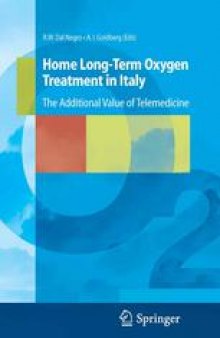 جزییات کتاب
جزییات کتاب
The development of new therapeutic strategies and the minimization of both direct and indirect costs represent crucial goals in the management of chronic diseases, particularly when these are characterized by a high degree of disability.Chronic respiratory insufficiency (CRI) represents an example of a persistent disease worldwide, for which home management (i.e., daily nursing and treatment) was introduced more than two decades ago according to traditional operating protocols. "Home long-term oxygen treatment" (H-LTOT) was expected to produce significant clinical improvements, together with a substantial drop in CRI social costs (e.g., hospital admissions, number of exacerbations, pharmaceutical costs, and patient’s reduced productivity). The present volume describes the evolution in the home management of severe CRI over the last two decades in Italy. It reviews a range of topics including the epidemiological aspects, complicating events, current systems for oxygen delivery with the most convenient interfaces, changing approaches to the patient--caregiver relationship, and the economic burden. Particular attention is paid to the new trends in telemedicine, which is regarded as the future step in respiratory medicine for home-assisted and home-ventilated patients. Data concerning the new role of nursing, the patient’s expectation of life, and the patient’s, family's, and doctor’s perspective are also reported, together with an update on the economic impact of telemedicine and the continuing improvements in the quality of telematic H-OTLT.



 دانلود کتاب
دانلود کتاب

 جزییات کتاب
جزییات کتاب





 این کتاب رو مطالعه کردید؟ نظر شما چیست؟
این کتاب رو مطالعه کردید؟ نظر شما چیست؟
